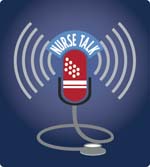What is the Keystone XL Pipeline project?
The Keystone project is a controversial proposal for a 1,700 mile pipeline to send 900,000 barrels every day of one of the world’s dirtiest fuels, tar sands oil from Alberta, Canada to Gulf Coast refineries in Texas. Major oil and other fossil fuel corporations in the U.S. and Canada, joined by other Wall Street interests and the federal and state politicians they influence are promoting the plan.
Opponents include every prominent environmental organization, other climate change activists, many farmers, ranchers and community leaders along the path of the proposed pipeline, First Nations leaders, most Canadian unions, and some U.S. unions, including NNU and the Amalgamated Transit Union.
The Obama administration, which has final authority become the proposal crosses international borders, has delayed approval of the project, but is expected to make a final decision soon.
Why does NNU oppose the Keystone XL Pipeline?
NNU opposes the Keystone XL Pipeline because of the adverse health and environmental impact on communities along the proposed route, as well as how the emissions from tar sands will severely exacerbate climate change which affects public health more broadly.
NNU is also concerned about the overall effects of Keystone XL on the long term environmental, economic, and social consequences of climate change, the need for promoting a green economy for economic and health purposes, and how approval of the pipeline would further entrench the corrosive power of the fossil fuel industry in distorting U.S. public policies.
What are the health risks posed by the Keystone XL pipeline?
First, extraction of tar sands oil is far more difficult than conventional oil drilling. The massive amount of water needed to separate the extracted product, bitumen, from sand, oil and silt, is contaminated with toxic substances that can not be returned to any water source that may end up in human drinking water. Nearly all is dumped in large pools that are home to cyanide, ammonia and other toxic substances which are already infecting neighboring clean water supplies. Communities living downstream from the ponds have seen spikes in rates of rare cancers, renal failure, lupus, and hyperthyroidism. In one small community of just 1,200 residents, 100 have already died from cancer.
Second, leaks from the transmission of the heavy, corrosive tar sands, over America’s agricultural heartland over water aquifers, and rivers pose a major danger. The pipeline would cross six states and major U.S. rivers. In 2010, a tar sands oil pipeline ruptured near Marshall, Mi. The diluted bitumen, a degraded form of petroleum, traveled 40 miles down the Kalamazoo River to Morrow Lake. More than a month later, state officials found that half of the residents in communities along the river reported respiratory ailments and other symptoms associated with the spill. In 2011, TransCanada pipeline spills and ruptures occurred in North Dakota and Montana. On March 29, 2013, an Exxon Mobil pipeline with tar sands oil ruptured near Mayflower, Ark. Two months later local residents continue to complain of health problems, including persistent coughs and headaches, and independent water and air tests have shown elevated levels of contaminants.
Third, refining tar sands oil, notes Friends of the Earth, is dirtier than refining conventional oil and results in higher emissions of toxic sulfur dioxide and nitrous oxide. Pollutants from tar sands refineries are directly linked to heart and lung disease, asthma, cancer and other serious health risks, as well as emissions of sulfur dioxide and nitrous oxide which contribute to acid rain. More than 40 percent of Americans live in areas adversely affected by air pollution with levels of particle pollution that can cause higher incidents of asthma, heart attacks, and premature death.
Carbon emissions are a major factor in intensifying climate change. Higher air temperatures can increase bacteria-related food poisoning, such as salmonella, and animal-borne diseases such as West Nile virus. Ground level ozone contaminants can damage lung tissue, reduce lung function, and increase respiratory ailments.
Pediatricians have said they are already witnessing a rise in vector-borne diseases including diarrhea, cholera, gastroenteritis, typhoid, and hepatitis due to environmental factors and the effects of climate change.
How would the Keystone XL Pipeline affect climate change?
According to a recent US Environmental Protection Agency (EPA) assessment, tar sands well-to-tank emissions are approximately 82 percent higher than conventional oil. If the U.S. were to import 3 million barrels per day of tar sands, just replacing the equivalent of conventional oil, it would be the equivalent of adding more than 22 million passenger cars to the road – with an substantial impact on climate change.
Leading climate change activist Bill McKibben says burning all the oil in those tar sands would nearly double the atmosphere’s concentration of carbon dioxide. NASA scientist James Hansen, a pioneer in climate research, has called the Keystone pipeline “the biggest carbon bomb on the planet” and warned its development would mean it was “game over” on the climate front. “Stopping Keystone,” says McKibben, “will buy time” for a transition to renewable sources.
A public letter by dozens of prominent scientists following a draft U.S. State Department review of KXL this spring said, “Our scientific judgment is that the actual and potential environmental damage are sufficiently severe to reject the Keystone XL pipeline in order to protect the climate, human health, and the multiple ecosystems this project threatens.”
What effects are we already seeing from climate change?
Warming has already led to the loss of one-third of Arctic summer ice and made the oceans 30 percent more acidic. Formerly rare super storms, like Hurricanes Katrina and Sandy and a recent Oklahoma storm called the “worst tornado in U.S. history,” have become far more common, as have major droughts and heat waves which produce devastating effects on food production and have caused tens of thousands of deaths.
Scientists worry that the rapid pace of climate change may soon become irreversible due to the warming that has already occurred. Further, economic commitments to new physical infrastructure required for additional fossil fuel development, including refinery capacity, power stations, and pipelines – what some call “carbon lock-in” – will make economic pressure and political pressure to slow or reverse climate change financially and politically untenable.
Don’t some unions support the Keystone Pipeline project?
Building trades construction unions support the pipeline, and are actively lobbying for it, under the premise it will create badly needed jobs for their members – and the vague promise that corporations promoting the pipeline will reward them with future deals in exchange for their partnership in campaigning for the pipeline.
But the actual number of jobs that will be created is far less than has been claimed by the industry and the unions. Nearly all the employment is temporary, construction jobs. Once the project is built, the number of people needed to operate and maintain the pipeline may be as few as 20, concedes the U.S. State Department.
Moreover, as fossil fuel production has become more capital intensive, employment in the sector has fallen, according to a 2012 report by the International Labor Organization and the United Nations Environment Program. In the U.S., for example, coal production has increased by one-third since the 1980s, but employment has fallen by 50 percent.
Far more jobs would be created by converting to a green economy, notes economist Robert Pollin. Every $1 million spent on renewal clean energy sources, he calculates, creates 16.8 jobs, compared to just 5.2 jobs created by the same spending on fossil fuel production.
A number of unions, including NNU, the Amalgamated Transport Union (ATU), transport workers, and others in the U.S. oppose the pipeline, as does the union representing bitumen workers in Canada whose president, David Coles, said, “The Keystone XL is not good for the economy, it’s not good for the environment, it violates all kinds of First Nations rights.”
Finally, advocating for the Keystone Pipeline puts unions in collusion with many of the most anti-union corporate interests in the U.S., such as the oil billionaire Koch Brothers, the American Petroleum Institute, and energy corporations generally.
Approval of the Keystone Pipeline would not only hasten the damage of climate change, it would also further enrich and entrench the economic, social, and political power of the fossil fuel industry, the primary beneficiaries of the pipeline.
Why should nurses be concerned about the influence of the fossil fuel industry?
Fossil fuel corporations have exerted enormous economic and political influence over the U.S. and global economies promoting what the Global Labor Institute calls an “extreme energy” agenda that has substantial, mostly adverse, effects on public health, the economy, the environment, workers, and local communities.
In the U.S., fossil fuel corporations are one of the two most powerful corporate sectors along with finance, symbolized by the nearly $1 trillion in profits racked up by the top five oil companies. They utilize that wealth to wield substantial clout with policy makers that leads to tax breaks, demands for deregulation and cuts in public protections, and sway over other economic and political policies.
This clout is especially troublesome considering fossil fuel companies are among the nation’s worst polluters, with severe consequences for health. Their tax evasion distorts budgets and deprives federal and state governments of needed revenue which undermines social program funding. Major fossil fuel executives, like the Koch Brothers, are directly linked to attacks on worker’s rights and other far right social and political causes.
Globally, fossil fuel corporations have blocked development of cheaper, more sustainable, less environmentally destructive energy sources, and exacerbate economic inequality, widespread poverty, and under development while being a major cause of harmful climate change.
Aren’t fossil fuels diminishing, reducing their long term viability and adverse corporate influences?
No. More than half of new energy demands are met by coal. New technologies are assisting the development of fossil fuels from sources such as tar sands, shale, and through extraction methods such as fracking. Under current trends, fossil fuels will still meet more than three-fourths of all energy needs by 2035. Renewable sources, such as wind and solar, make up less than 5 percent now.
What are the public health effects of fossil fuel production and policies?
Public health costs in the U.S. alone are pegged at more than $120 billion every year according to the National Academy of Sciences. Fossil fuels generate pollution that contaminates our air, rivers, lakes, oceans, and food supply, and has substantial harmful health impacts.
Hazardous air pollutants emitted directly from coal-fired power plants have been linked to damage to the eyes and skin, impairment of neurological function and ability to learn, and pulmonary and cardiovascular disease. The EPA has determined that exposure to particulate matter is a cause of heart attacks, breathing problems and long term respiratory illness including asthma, and reproductive, developmental, and cancer outcomes.
What is the impact of fossil fuel production on worker and public safety?
Today millions suffer from the effects of fossil fuel pollution, especially in communities close to mines, oil and gas wells, pipelines, power stations, and transport routes.
Accidents, such as the BP Deepwater Horizon and Exxon Valdiz spills, and the Massey Corporation’s West Virginia Big Branch mining disaster, have become more common, in part because of the political influence of the fossil fuel industry in promoting deregulation and less rigorous safety inspections.
———————————–
Select Sources:
“Resist, Reclaim, Restructure: Unions and the Struggle for Energy Democracy. Global Labor Institute, Cornell University, October, 2012
“Say No to Tar Sands Pipeline: Proposed Keystone XL Pipeline Project Would Deliver Dirty Fuel at a High Cost,” National Resources Defense Council, March 2011
“Back to Full Employment,” Robert Pollin, Boston Review, MIT Press, Cambridge, Mass., 2012
Keystone XL Pipeline. The Basics. Friends of the Earth.
Exposed: Canadian Oil and Gas Workers, Many Unions, Now Oppose Keystone XL Pipeline, Nation of Change, May 31, 2013
“Big Oil’s Monopoly Money: Ending $1 Trillion in Fossil Fuel Subsidies Requires Breaking Industry’s Political Influence,” Peter Lehner, National Resources Defense Council, June 22, 2012
“Emissions of Hazardous Air Pollutants from Coal-fired Power Plants,” American Lung Association, March, 2011
Arkansas pipeline spill casts shadow over Keystone XL, Los Angeles Times, June 6, 2013
Two Months Later, Arkansas Residents Still Hurting From ExxonMobil Tar Sands Spill, Rocky Kistner, Huffington Post, June 3, 2012.
“What tar sands and the Keystone XL pipeline mean for climate change,” The Guardian (UK), August 23, 2011.
“NASA’s Hansen Explains Decision to Join Keystone Pipeline Protests,” Inside Climate News, August 29, 2011.
“A Presidential Decision That Could Change the World: The Strategic Importance of Keystone XL,” Michael Klare, The American Empire Project, February 11, 2013.
“Keystone’s Thousands of Jobs Fall to 20 When Pipeline Opens,” Bloomberg, February 13, 2013.
###


